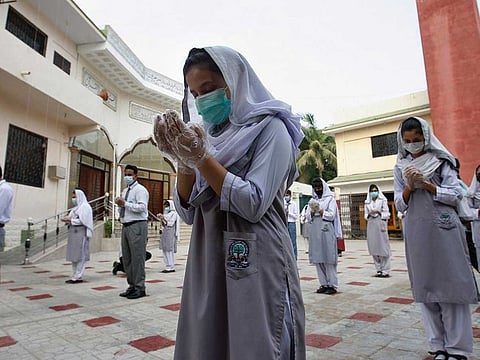How COVID-19 disrupted Pakistan’s education system
Parents and students net losers as authorities struggle to keep the academic ship steady

Should we? Shouldn’t we? What about exams? What about homeworks? What if the internet doesn’t work? What about falling grades? Missed homeworks? No teacher available for in-person guidance? What about career planning? And a million other such questions.
If Pakistani parents are getting a sense of de ja vu over sending their children to schools, it is perfectly understandable. As the country’s school system limps back to normal teaching after an extended winter break, some of the issues confronting families are the same that they faced the last year when the education system shut down twice to reopen again amid the same kind of a debate that is raging in the country again.
Now, as before, the government has gone for a staggered reopening: grades 9 to 11 started yesterday; the colleges and the universities to follow suit, while the lower grades are still at home waiting to visit campuses that they have not been to for more than 9 months with any measure of regularity. A whole batch has moved to the next grades without even seeing their new classrooms.
Also Read: In Pakistan the year ends on a harsh note
But even this sequential reopening has not been without split opinions that argue for and against the idea of calling in the students at a time when the government continues to press the idea that the virus is at its threatening worst. There are those who think that this now-we-open-it-now-we-don’t policy has ruined the educational flow.
The government, they argue, has kept everything pretty much open but has played havoc with the schools, which among all sectors observe SOPs rigorously and use strict school discipline to ensure compliance — something that is not possible even with businesses and markets where virus-encouraging violations abound.
Complexities of e-learning
This lot includes teachers and many parents who are sick and tired of making the makeshift online teaching work and are exhausted keeping the home and school work for their kids run simultaneously. Mothers particularly are at a disadvantage because the menfolk leave the home for work and contribute very little to shouldering the burden of navigating their children through the complexities of e-learning.
Rooting for the same reasoning are staff and teachers of the private sector schools, who have seen deep cuts in their salaries and also layoffs as the owners try to balance their budgets or save their profit margins.
On the other side of the argument are health experts and those who have constantly argued that until and unless Covid-19 is total under control, sending children to schools and reopening universities and colleges is a high-risk strategy. Their reasoning has got impetus on account of the new strain of the virus that seems to spread very fast and does not distinguish between the young and the old.
The revival of studies has not really resolved the conflicting positions because for now the system is a bit like a half-ajar door. Locally, it is called the hybrid model. This fancy term means that the students alternate between on-campus and online education thus reducing the burden on both schools and making the management of teaching easier. But that’s the theory.
Impossible situations
In practice the hybrid model creates many impossible situations. Parents have to juggle their days and schedules according to the school timetable and the whole week is spent in this effort. The teachers have to adjust both the systems every 24 hours.
The students find it chaotic and as creatures of routine they find the simultaneous application of the two ways of teaching jarring. Another version of the hybrid model reduces the class strength to half. This is a nightmare for the teachers since they have to repeat their lessons besides finding it impossible to achieve their teaching goals.
It is true that there is no prefect solution to an inherently imperfect situation created by the pandemic but nearly a year of excessive experimentation without a generally acceptable framework for keeping the education going cannot be considered a policy success.
In the beginning the online system despite being limiting and not necessarily equally available to every pupil in the country started to take root and find some rhythm but then this was upended by the demand for on-campus education. As a result, Pakistan now has a methodology in place that relies more on the twist and turns of the Covid-19 situation than anything else.
Because education is a devolved subject — each of the four provinces and the centre have their own education policies and preferences — national coordination has not been perfect, that has aggravated the problem of keeping the educational ship steady in these choppy waters.
One obvious beneficiary of this uncertain situation is the tuition industry that has thrived on learning losses and has stepped in to fill the gaps in education that students and parents are now struggling to cope with. This means extra expenditure and at times also poor quality of output offered by these academies that have popped up online in every corner of the country.
Parents and the students and the net losers. They cannot even plan their weeks much less their futures given how rapidly and frequently things have changed on the educational front. The struggle to get sons and daughters educated with job-worthy degrees was always an uphill task. Now it looks to be particularly exhausting.
Syed Talat Hussain is a prominent Pakistani journalist and writer. Twitter: @TalatHussain1
Sign up for the Daily Briefing
Get the latest news and updates straight to your inbox







